Table of Contents
Your child attends a Catholic high school celebrating the diversity of gender. Are the bureaucrats writing diversity statements naive, ignorant, or advocates?
Argument: The Jesuit Provinces treat the Critical Theory concepts of Diversity, Equity, and Inclusion as though they were themselves virtues, rather than what they are—a benign disguise activating visceral political appetites.
Jesuit colleges and universities have been fully participating in this secular “social justice” political project for many years, willingly allowing Critical Theory to transform traditional Catholic Social Teaching.
Since the summer of 2020, the Jesuit Schools Network has committed its high schools to follow a similar secular political path.
As they have embraced antiracism, the Jesuit Schools have also embraced the ideology of gender within the DEI trinity, manipulating the postmodern ideas of both to transform your children just as sculptors use a variety of chisels to shape stone into the image they desire.
Having incorporated gender as a key element of their Diversity, Equity, and Inclusion trinity, the Jesuit Schools have aligned their educational mission with those who intentionally seek to emasculate the male, to eviscerate distinctions between the masculine and the feminine, and ultimately to dismember the traditional family.
In doing so, they substitute objective truth based on reason for subjective “personal truth” based upon feelings about “who I am as a gendered being.”
Whether Jesuit schools have wielded the gender chisel out of ignorance, naïveté—or joy at the prospect—this chisel, like the antiracist chisel, shapes the values of your children toward a specific political end.
Part 1: The Degenerating Chest
C. S. Lewis, alert in the first half of the 20th century to the earliest manifestations of postmodern thought in The Academy, understood well what was likely to occur once educators rejected objective values and natural law. Personal feelings, untrained and unguided by reason, become primary, and all values become, therefore, subjective and morally relative.
In his 1942 book The Abolition of Man, Lewis explains that this turn away from objective values undermines the moral education of children.
Children, he reminds us, must be trained appropriately in order to develop just sentiments. The adjective “just” here refers to sentiments—emotions—that are honorable, morally right, naturally proper and fitting.
For St. Augustine, such training of the emotions is necessary for the virtuous life, virtue being the “ordinate [correct, ordered] condition of the affections in which every object is accorded that kind of degree of love that is appropriate to it.”
Moral education, which is the training of the emotions, is essential for the strength of the chest—the heart—which is the “seat of magnanimity, of emotions organized by trained habits into stable sentiments.”
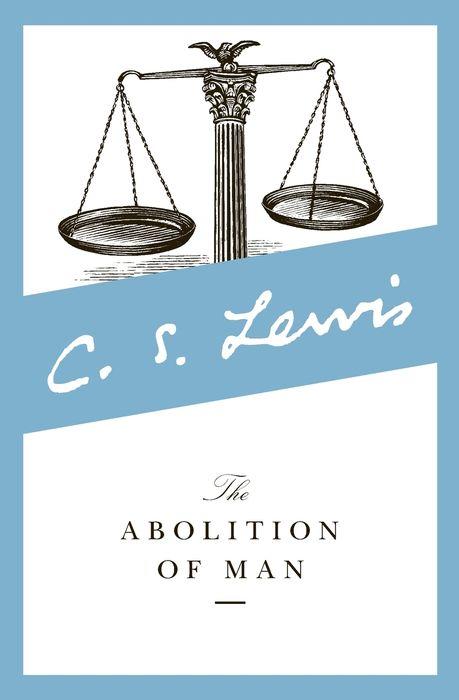
The family and the church are, of course, the primary teachers in a child’s moral education.
The schools traditionally facilitate the continuous shaping of the child’s character.
Such character-building has always taken place through the development of the virtues, especially the cardinal virtues—prudence, temperance, fortitude, and justice.
These are called “cardinal” because they are the virtues on which all else hinge, “cardinal” being from the Latin “cardo- cardin: serving as a hinge.”
For intellect (the head) to rule the appetites (the belly), it must do so through disciplined emotions springing from the heart (the chest).
Without such training of the sentiments, says Lewis, educators produce “men without chests.”
The current way of proceeding in the Jesuit Schools diminishes this emphasis on the virtues—as it diminishes the central role of the Gospels—and elevates unfettered feelings as a surer path toward realizing justice: racial justice, gender justice, environmental justice, health justice, modify your social justice as the prevailing winds direct.
The personal narrative, the lived experience, becomes a primary mode of discourse, the assumption being that the unfiltered emotions, which such narratives provide, move young students more effectively toward the prevailing culture’s acceptable ideas and concrete actions.
As we know all too well, the video—whether it be 80 seconds or 8 minutes and 46 seconds in length—is an especially useful narrative tool for furthering the acceptance of certain ideas and the realization of concrete political action.
The painstaking and necessarily gradual path that must be taken when training the virtues—so that boys and girls live honorable lives, treat one another ethically, strive to create more just communities—requires time, patience, and methodical practice. Such training hardly competes with the immediacy of a video or the “lived experience” of a classmate.
Maintaining emotions in harmony with reason is not a priority of the prevailing Academy culture.
Gender, in the postmodern era, refers to who you are without regard to biological reality. It is how you personally perceive and experience your identity as a human being. It is feelings-based and possesses no limiting principle keeping it within the bounds of reason.
The Jesuit Provinces have selected a path of education about which Lewis warned us, one that promotes subjective feelings and values, however unbound they are to objective Truth and Natural Law.
The acceptance of Critical Gender Theory, which intersects with all other Critical Theories, directly sabotages the essential task of education—the inculcation of classical virtues.
Gender, in the postmodern era, refers to who you are without regard to biological reality. It is how you personally perceive and experience your identity as a human being. It is feelings-based and possesses no limiting principle that keeps it within the bounds of reason.
An education that prioritizes feelings unbound to reason and objective truth is an education that has substituted the classical for the counterfeit virtues of diversity, equity, and inclusion.
Public schools have proceeded down this solidly postmodern path for decades since, during the 1970s and 1980s, values clarification and multiculturalism were in vogue.
Jesuit colleges and universities have long ago joined the postmodern march.
Jesuit high schools have decided to join them.
Every moment Catholic schools emphasize the imitation virtues of diversity, equity, and inclusion, raising them to the level of “gospel values,” is time and energy that neglects the training of the sentiments, which is essential for the strength of the chest.
Without such training, the intellect is defenseless against the visceral appetites, unable to control them.
This chosen educational path—as Lewis warns—will, in effect, “castrate” your child even as his teachers “bid the gelding be fruitful.”
Part 2: What Is Gender for a Jesuit School?
Can any administrator or faculty member at a Jesuit school succinctly express why the institution’s diversity statement includes any reference whatsoever to gender?
What does a Jesuit school mean when it states publicly, as Walsh Jesuit in Ohio does, that it is “committed to the gospel value of diversity among its community as a core value” and “that equal access and representation across gender, race, sexuality, academic ability and socioeconomics will help create a learning environment that promotes awareness.”
Ignoring for the moment that diversity has become a “gospel value,” what exactly does “equal access and representation across” gender entail? What “awareness” regarding gender is to be promoted?
But first, shouldn’t the school define gender?
What does a Jesuit school mean when it states publicly, as Pennsylvania’s Scranton Prep does, that it “strives to form a school community in which differences in race, ethnicity, culture, religion, socioeconomic status, gender, sexual orientation, physical ability, and learning style are experienced, accepted, and understood.”
How exactly are differences in gender “experienced, accepted, and understood”?
But first, is everyone at Scranton Prep on the same page regarding what is meant by gender?
What does a Jesuit school mean when it states publicly, as Seattle Prep does, that its curriculum and instruction practices provide “equal access and opportunities to all students to fully participate in school programming and contribute to the school community regardless of gender, race, ethnicity, socioeconomic status, religion, sexual orientation, or any other identity.”
Which exact “curriculum and instruction practices” would demonstrate full participation and contribution to the school community regardless of gender?
But first, that word gender. Shouldn’t the school explain it?
Gender is loaded with meaning in Critical theories: gender is identity and there are many gender identities; gender is an expression, and there are a multitude of those; gender is socially constructed and can be deconstructed and reconstructed by any person whose feelings demand it.
So what do Jesuit schools load into their definition of gender?
What does a Jesuit school mean when it states publicly, as San Jose’s Bellarmine College Prep does, that its Diversity Office centers its programming on eight types of diversity—Race/Ethnicity, Religion, Gender, Age, Ability/Disability, Sexual Orientation, Geography, and Socio-economic Status—and that its “approach is to focus on students’ awareness of their own identity and experiences and then explore how these insights translate to their perception of others”?
Here we have, like at Walsh Jesuit, a gender identity about which a student must be aware.
Awareness of identity is clearly important at Jesuit.
That your child is “created in the image and likeness of God” is too insubstantial an identity for the Jesuits’ political project.
Exactly which types of gender “experiences” might a Jesuit student have? Bellarmine Prep does not say. Exactly how might the student “explore” the “insights” obtained from these “identities and experiences”? And what exactly determines how those explored insights “translate to their perception of others”?
But first, since gender is a type of diversity, exactly how diverse might it be at Bellarmine Prep?
Fairfield College Prep in Connecticut proclaims that “the dimensions of diversity” at its school “includes but is not limited to race, ethnicity, class, gender, religion and socio-economic status, to name a few.”
Exactly how extensive the dimension of diversity involving gender might be is not explained, and while I remain ignorant how the good people at Fairfield Prep define gender, I notice something unusual about its diversity statement.
So first, before I suggest that Fairfield define gender, attention must be paid to this:
“At Fairfield Prep, we attempt to address certain dimensions of diversity that are consonant with our mission as a Jesuit, Catholic school of excellence.” [italics mine]
Fairfield, then, apparently acknowledges that there are in fact “certain dimensions of diversity” that are not “consonant” with its mission.
This is refreshing.
And all the more reason why Fairfield, like other Jesuit schools, must define gender.
Why the Society of Jesus has attempted this disordered blend of Critical Theory with Catholic Social Teaching is best left to the field of psychology, but the Jesuits have, nonetheless, adopted the identity politics of Critical Theory as necessary to their educational mission.
For any Catholic institution—if it remains Catholic in more than name—must know that Critical theories are not in harmony with Catholicism and Catholic Social Teaching.
Gender is loaded with meaning in Critical theories: gender is identity and there are many gender identities; gender is an expression, and there are a multitude of those; gender is socially constructed and can be deconstructed and reconstructed by any person whose feelings demand it.
So what do Jesuit schools load into their definition of gender?
Theories rejecting the Imago Dei—as all Critical theories do—do not recognize individual agency and the individual human soul.
In Critical Theory your children are identities in intersection with other identities as they self-actualize into who they are.
Gender is aimed at the heart. Gender is only about feelings. And where feelings—the emotions, the sentiment—remain insufficiently or inappropriately trained, gender overwhelms.
Standard doctrine in the prevailing Academy culture asserts that children—your children—are assigned their sex at birth by virtue of their specific body parts. None are created beings. God has nothing to do with any of this.
Why the Society of Jesus has attempted this disordered blend of Critical Theory with Catholic Social Teaching is best left to the field of psychology, but the Jesuits have, nonetheless, adopted the identity politics of Critical Theory as necessary to their educational mission.
My guess is that, throughout the Jesuit school system, there are many school leaders who remain uneasy with the alacrity with which the Jesuit Provinces have taken a “both/and” approach when in fact Critical Theory remains an “either/or” approach.
And as heartening as it is that Fairfield Prep bothers to include a statement alluding to the incongruity of “certain dimensions of diversity” with Catholic teaching, it still raises questions:
Why does Fairfield—or any Jesuit school—include gender in its litany of approved diversities?
What exactly does any Jesuit school mean by gender that it could not mean by sex—as in a man and a woman?
Is male and female not diverse enough, not inclusive enough for a Catholic institution?
Are both masculine and feminine attributes bereft of enough natural diversity that an ever-expanding number of gender identities must be acknowledged and affirmed in all their fluidly mutable, adaptable varieties?
Are Jesuit educators who craft and approve diversity statements doing so without regard to—or because of—their logical implications and consequences? Are they merely caught up in a cultural hysteria, or are they true believers?
When a school publicly celebrates the diversity, equity, and inclusion of gender, that school has taken a position: it asserts, as the Critical theorists do, that gender is a social construction and only a social construction and, furthermore, the school has aligned itself with those who believe that sex is “assigned at birth.”
Part 3: The Toxic Male
Diversity statements, now a staple of institutional bureaucratese, glaze the eye and deflect the reader from taking a closer look. You would hope a Jesuit school would not succumb to these genuflections to the secular, but here we are.
In a better world, an educational institution—especially a Catholic one—would make no public statement containing rote drivel. We do not live in a better world.
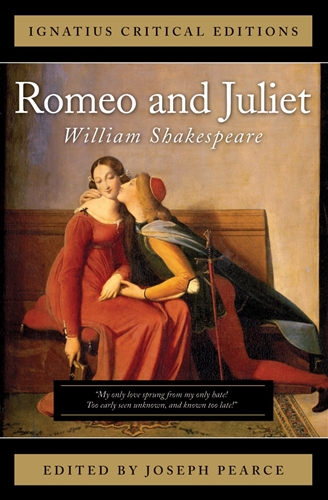
But the babble that yokes postmodern institutions should not obfuscate the reality: the individual Jesuit campus may simply be parroting what the Jesuit Schools Network requires of it; the individual campus may truly mean what it publicly states; or the campus remains ignorant of the Pandora’s box that gender is.
Whatever the case, if an academic institution is proclaiming as important gender diversity, gender equity, and gender inclusion, it ought make clear what it means by the word gender.
In his book When Harry Became Sally, Ryan Anderson reminds us that the root of gender is “gen,” from which comes generate, meaning “to bring into existence” and “to beget.” Its noun form generation refers to “offspring” or “kin.”
Gender, therefore, cannot be objectively separated from sex.
Being a man and a woman are, as Anderson reminds us, “bodily, biological realities.” Gender “properly understood is a social manifestation of human nature, springing forth from the biological realities, though shaped by rational and moral choice.”
A “healthy culture does not attempt to erase our nature as male or female embodied beings,” says Anderson.
But the Critical theorists who mine identity politics reject the concept of human nature and will, of course, have none of this: sex, they say, is separate from gender.
Gender is, according to Critical Theory, “the part that relates to who you are and who you experience yourself to be.”
They contend that gender is nothing more than a “social construct,” something, as James Lindsay puts it, “learned and done, not something that necessarily has anything to do with one’s biological sex, (which) refers to features of the body for reproduction only and has nothing to do with who someone is.”
That was in the merely irritating period when the Modern Era had not yet gone fully Postmodern—and it remains an illustration of the ease with which an Academic culture can carry out its political project through its junior wings, the elementary and secondary schools.
Furthermore, for some Critical theorists, sex itself, like gender, is a ‘social construct”—to be deconstructed and reconstructed at will. This leads, of course, to the current Transgender Industrial Complex, the world of hormone therapy, chest reconstruction and breast augmentation, penile inversion vaginoplasty, phalloplasty, and orchiectomy.
Because the ideas associated with gender in the postmodern world diverge so entirely from gender as understood in the modern world, it is worth taking a moment to consider an early tipping point—the English class.
Some of us are old enough to remember when gender was a term that arose only in the English class, when a student learned that English nouns and pronouns are categorized as being masculine, feminine, or neuter so as to produce agreement between nouns and pronouns.
Gender was not separated from sex then, and the generic grammatical usage of certain pronouns—he, for instance—and of certain nouns—man, for instance—was understood by all.
Everyone turned in his homework, then (“his” being the generic pronoun referring to its antecedent “everyone,” which is a singular indefinite pronoun that could include both males and females). Man is the only animal that reasons, then (it being understood that “man” is inclusive of both men and women.)
Then came feminism’s assault on the patriarchy: the generic use of “he” and “his” were attacked in an early opening skirmish, where men, accommodating themselves like Adam to the whims of the fairer sex, chose the path of least resistance.
That is, of course, not at all accurate.
Men (as in the male sex) did not choose the path of least resistance. Teachers did.
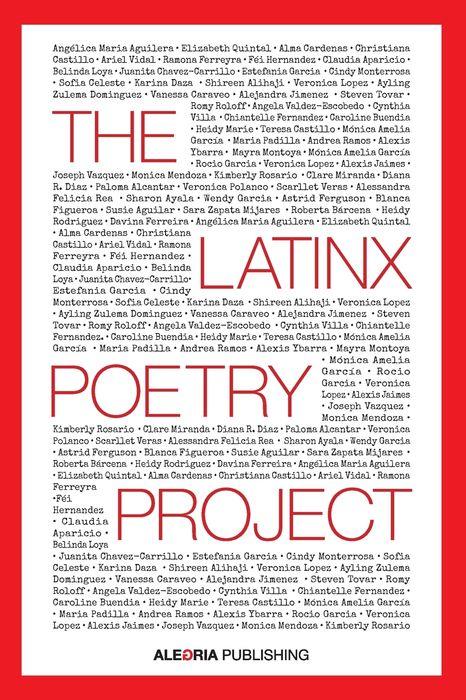
For a while, English teachers, caving all too readily to this emerging form of identity politics, began teaching their charges to use “he or she” and “his or her” in order to spell out to new generations of children that the unspecified antecedent—be it “everyone,” “student,” “cashier”—could be either a man or a woman.
Soon the “or” gave way to the slash: him/her and he/she combinations mangling prose from composition to composition among the piles upon piles of feminist-compliant student papers.
That was in the merely irritating period when the Modern Era had not yet gone fully Postmodern—and it remains an illustration of the ease with which an Academic culture (and feminism was first Academic before it was anything else) can carry out its political project through its junior wings, the elementary and secondary schools.
English teachers soon resorted to collectivizing thought. For example, the use of the singular possessive pronoun when referring to the antecedent student, which required the “his or her” or “his/her” formulation, gave way to the plural possessive “their” referring to the antecedent students.
Better to write Students ought consider carefully before committing their thoughts to paper than to write A student ought consider carefully before committing his or her thoughts to paper.
The singular—the individual—receded, as the plural—the group—advanced.
Grammatical coherence in discourse had, then, reached the identity plateau where individuals must be considered in their aggregate in order for the “he or she” or “his/her” nonsense to give way to some new form of sense.
This increase in the usage of the plural and the consequent avoidance of the singular in grammatical agreement has accompanied the rise of group identity in the prevailing Academy culture and its ensuing diminution of individual agency.
The triumph is so complete that these days “they” and “their” and ‘them”—all plurals, of course—have become the prevailing Academy culture’s approved personal pronouns for a singular human being whose feelings demand it.
When language controls thought, the grammar of Good Think is as important as its vocabulary.
Orwell wrote about this symbiotic relationship between political thought and language in his essay ‘Politics and the English Language”: “If thought corrupts language, language can also corrupt thought.” Perhaps the Jesuits have adopted the postmodern view of Orwell’s work as merely a how-to guide.
A person is not “diverse” or “included” unless and until that person is considered as part of an identifiable group, which is, of course, what we have today in the insatiable political appetite for identities.
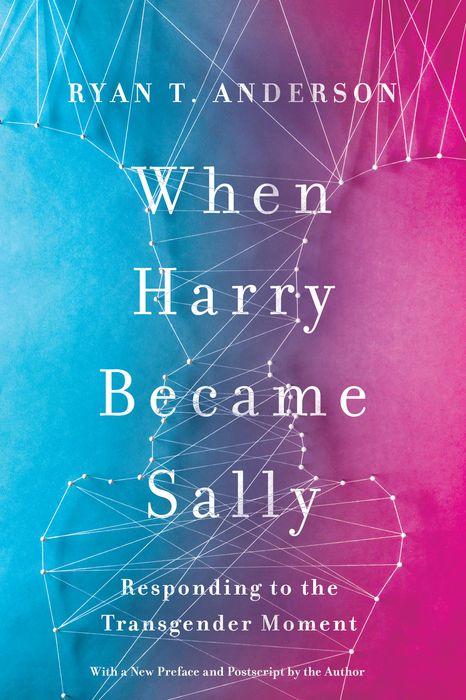
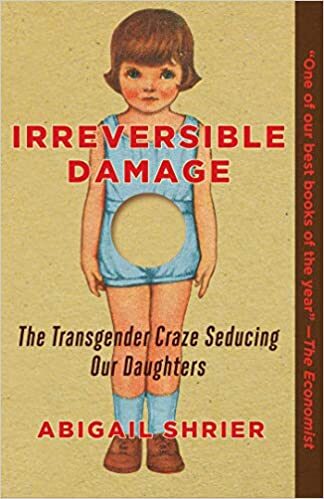
Mid-20th century feminists, nascent Critical theorists themselves, attacked the patriarchy by initiating the separation of gender from sex.
Their immediate audience was the Baby Boomers of both sexes, the first American generation to graduate with high school diplomas and, in massive numbers, continue into higher education.
The emerging postmodern Academy had, then, a virgin audience.
College students—unfamiliar with the realities of getting jobs, supporting themselves, saving money, getting married, raising families—were ripe for metamorphosis.
If you are undertaking a complete transformation of a culture, you first do it through those who know little, if anything at all, about reality. Ignorance in others is always bliss for those hellbent on utopia.
The traditional range of male and female traits associated with gender are, the Academy asserted, mere social constructs created by the patriarchy to keep the male in a dominant position of power over the female.
The masculine became an agent of oppression, the feminine merely the sign of servility demonstrative of false consciousness.
To go beyond “gender” as traditionally understood, to liberate the self, to self-actualize became the order of the day.
Gender stereotypes were shredded as gender was deconstructed.
That a woman exhibits certain traditional “feminine” traits over other traits was scorned; that a woman desires marriage, children, a life in the home was mocked; that a girl can do anything—anything—a boy can do became the necessary female fact of life.
Critical theorists critiqued every detail involving sex and gender and how those relate to society, to culture, and to the dynamics of power.
Masculinity, placed under the Critical microscope, was found not merely destructive to the other but to itself.
Masculinity was toxic even to men.
This has been the Critical stew in which Gender Theory resides. An educational institution declaring that diversity, equity and inclusion includes gender must confront the reality underlying its declaration of Good Think.
Part 4: With Which of the 57 Genders Does Your Child Identify?
A Jesuit male student who is both cisgender (that’s a thing, parents, and currently is part of the “inclusive” culture of any school) and heteronormative will receive the necessary training that will transform him into someone committed to gender justice. He will become the ally of the gender-nonconforming lest he be considered a bigot.
The Jesuit school appreciates that, in matters of both race and gender, the students who enter their halls have been miseducated at home and, sad to say, in certain less Jesuit-minded arenas of the church.
After all, were the Jesuits confident that their incoming freshmen lived in homes that had raised children to be morally righteous in the manner that the current Jesuits would approve, why would they be undertaking such a transformative project?
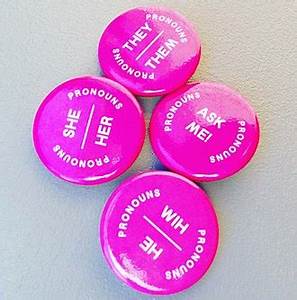
Because they have not been properly educated at home, children have to be trained not merely to understand but to accept and affirm their peers who are, say, gender questioning, or gender fluid, or bi-or-tri-gender, or genderqueer, or transgender.
Race or ethnicity in matters of gender is not a distinguishing factor here.
All male and female students must become gender sensitive, regardless of their other identities (identities determined by race and ethnicity, by sexual orientation, by socioeconomic status, etc.). To graduate while still assuming a person’s gender is graduating gender-ignorant or, worse, gender-unjust. The Jesuits cannot have that.
If students are not both gender aware and gender affirming upon graduation, how can they be committed to doing gender justice?
Will Jesuit schools affirmatively acknowledge the variety of gender expressions, all the ways a student expresses his diverse gender through his behavior, his mannerisms, his physical characteristics, his appearance?
Will Jesuit schools ask students at the beginning of each year to declare their preferred pronouns? Will Jesuit civility require that teachers and fellow students learn one another’s preferred pronouns? Will the pronouns be placed on student name tags or be sewn into student uniforms until everyone in the school has learned them?
If not, why not?
Surely an institution infused with the virtues of gender diversity, gender equity, and gender inclusion is not unaware of what that commitment entails?
Will Jesuit English departments ditch what remains of any antediluvian notions regarding pronoun-antecedent agreement?
Will Jesuit Schools acknowledge that sex is entirely separate from gender?
If not, why not? Do Jesuit schools remain bastions of anti-trans bigotry?
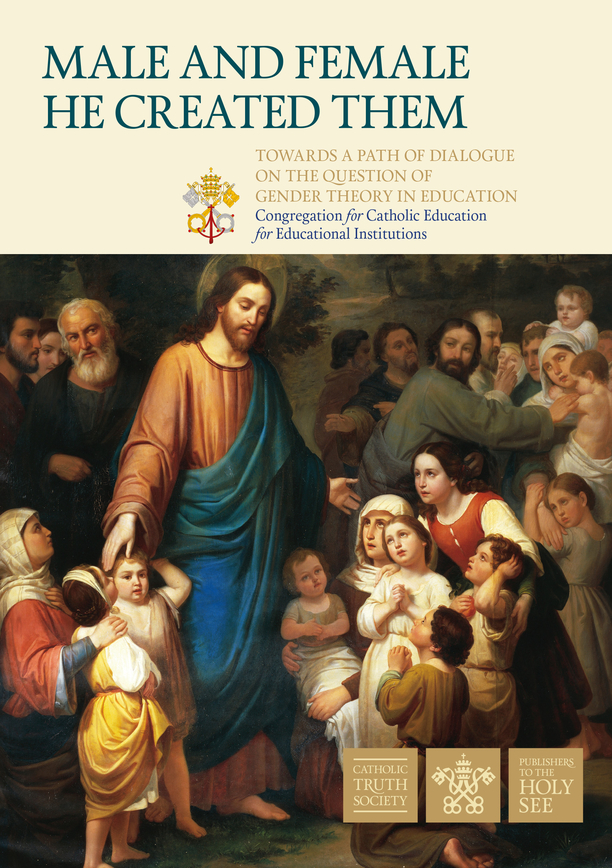
Do Jesuit Schools agree that sex—as the American Medical Association defines it in its Equity Language Guide— is “a label typically assigned by a doctor at birth based on the genitals you’re born with”?
Do Jesuit Schools agree with the American Psychological Association that “gender is a nonbinary construct that allows for a range of gender identities and that a person’s gender identity may not align with sex assigned at birth”?
Do Jesuit Schools agree with the AMA that a person’s gender identity refers to “how people conceptualize themselves as gendered beings, including one’s innate and personal experience of gender,” which, the AMA helpfully adds, “may or may not align with one’s gender expression or biological sex”?
Of course, this notion that a doctor slaps the label BOY or GIRL on a baby’s butt at birth hardly squares with God.
In the 2019 document by the Congregation for Catholic Education, Male and Female He Created Them: Toward a Path of Dialogue on the Question of Gender Theory in Education, we are reminded that Christian anthropology has its roots in the Book of Genesis: “God created man in His own image…male and female He created them.”
Here is self-actualization without the prevailing culture’s corruption: the self is completed by “the one who is other than the self,” and both have “a point of encounter forming a dynamic of reciprocity which is derived from and sustained by the Creator.”
Men complete women. Women complete men.
No, sex is not assigned at birth.
The “metaphysical roots of sexual differences,” according to Male and Female He Created Them, refutes all “attempts to negate the male-female duality of human nature, from which the family is generated.”
To deny this male-female duality is, Pope Benedict says, to make of the human person an abstraction who “chooses for himself what his nature is to be.”
Gender, in Critical Theory, is this abstraction. Gender diversity, equity, and inclusion denies this male-female duality.
The American Medical Association and the American Psychological Association—like almost all major professional organizations and associations in this country today—are all-in with the latest in Critical Theory.
The Church, however, in Male and Female He Created Them, realizes that Critical Gender Theory “moves away from nature and towards an absolute option for the decision of the feelings of the human subject. In this understanding of things, the view of both sexual identity and the family become subject to the same ‘liquidity’ and ‘fluidity’ that characterize other aspects of postmodern culture, often founded on nothing more than a confused concept of freedom in the realm of feelings and wants, or momentary desires provoked by emotional impulses and the will of the individual, as opposed to anything based on the truths of existence.”
To what extent, then, are Jesuit Schools all-in with Critical Gender Theory?
Diversity, equity, and inclusion are related to the appetites—to the visceral desires for retribution, disruption, confusion, chaos, dismantlement, and power that is all too often couched in the less threatening language of change and progress and social justice and “a better world.”
Interested parents and alums whose gender sensitivity lacks sufficient training might avail themselves of any number of helpful websites.
Harvard Medical School—a medical school, yes—provides a helpful list of the most common gender identities, and National Public Radio is here to assist as well.
Anywhere in the Academy you can locate beneficial lists of designated pronouns, including instructions on pronoun etiquette.
Which brings us back to Jesuits schools in the third decade of the 21st century.
Diversity is “divine,” we are told at Dallas Jesuit. It is embedded within the school’s “mission and core values,” says Brebeuf Jesuit in Indianapolis. Diversity “grounds” Marquette University High School’s students “in Catholic, Jesuit values.”
Diversity is, therefore, at the heart of today’s Jesuit education.
This is what strengthens the chest these days.
Perhaps the relationship diversity, equity, and inclusion have to the cardinal virtues prudence, temperance, justice, and fortitude is assumed to be clear.
It is not.
Diversity, equity, and inclusion are related to the appetites—to the visceral desires for retribution, disruption, confusion, chaos, dismantlement, and power that is all too often couched in the less threatening language of change and progress and social justice and “a better world.”
As we have previously observed, antiracism is support for policies that intentionally discriminate by race. Gender affirmation requires support for “personal truths” that deny human nature and God.
The Jesuit Schools are in word, if not in deed, all-in.
Part 5: The Gender Chisel Aims at the Family
Perhaps, you might think, all the Jesuit Schools are trying to do here is stop bullying.
Some boys are more effeminate than others. Some less inclined to roughhouse. Some more aesthetically inclined. Some more timid. Boys run the gamut, just as girls do, and yes, certain boys may be subject to bullying.
This has always been a real-life situation among boys.
Gender theory, however, is not concerned with addressing bullying.
Pledging itself to the inclusiveness of gender diversity signals the Jesuit school’s allegiance to something other than the cardinal virtues—its fealty, rather, to the prevailing cultural norms of the Postmodern World.
The Jesuit Schools today are—as the Jesuits in Maryland were when they sold their slaves to pay Georgetown College’s debts—decidedly not countercultural.
Furthermore, anti-bullying proposals have the intended political effect of shutting down opposition to ideas rather than shutting down bullies.
Logic tells us that there is less bullying in the past few decades than there has ever been in the lifetimes of most anyone reading this. That there is less, perhaps much less, in reality is often, it seems, an incentive to deny reality and create a narrative indicating that bullying, like racism, is everywhere and must be battled with specific policies and practices.
A Jesuit school does not need to adopt any notions about gender in order to train its boys to treat each other with dignity and respect. A Jesuit school knows that.
The conventional traits of boys need not be upended as toxic under a one-size-fits-all regime of social re-engineering in order to train boys to treat each other with prudence, justice, fortitude, and temperance.
Pledging itself to the inclusiveness of gender diversity signals the Jesuit school’s allegiance to something other than the cardinal virtues—its fealty, rather, to the prevailing cultural norms of the Postmodern World.
The Jesuit Schools today are—as the Jesuits in Maryland were when they sold their slaves to pay Georgetown College’s debts—decidedly not countercultural.
Critical Gender Theory, Queer Theory, and Feminist Theory serve to deconstruct all that we know objectively about the sexes, about the relationship of men and women, and about the family.
That these proliferate—along with other Critical theories, such as Race Theory and Conflict Theory—throughout Jesuit colleges and universities and, in conjunction with the diversity bureaucracies of these institutions, stamps as wholly secular many of the policies and practices of these Catholic institutions of higher education.
When the actions of the Jesuit Provinces demonstrate, as they do, a belief that students and their families are complicit in and benefit from the existence of every racist, sexist, heteronormative structure and system that is said to be the cause of oppression and victimization, the Jesuits accept the Critical Theory analysis of the family.
The Jesuits will publicly scoff at the idea that they are complicit in activity that threatens the family. That they do so now will, I hope, not result in a virtuous orgy of apologies by their successor priests 150 years from now after the damage to the institution of the family has already been done. Far better that the Society of Jesus re-examines its inculturation of Critical Theory before the deluge.
The profound intellectual upheaval affecting all of our basic cultural institutions—family, religion, education, the arts, and the law—is a source of delight in the secluded enclaves of The Academy. But its pernicious consequences enter into the homes of families whose lives are circumscribed not by theories but by the practical realities of every living.
Sewing doubt and confusion about the reality of our being created male and female does nothing to enhance and strengthen the family—quite the opposite—and that is why the incorporation of gender into the heart of the Jesuit mission is dangerous.
Critical Gender Theory’s deconstruction of every traditional societal value and cultural norm is a direct attack on the family as an institution.
The traditional family, according to the Critical theorists, is the womb in which all unequal power relationships are nurtured and expand throughout society.
The family is the root of miseducation.
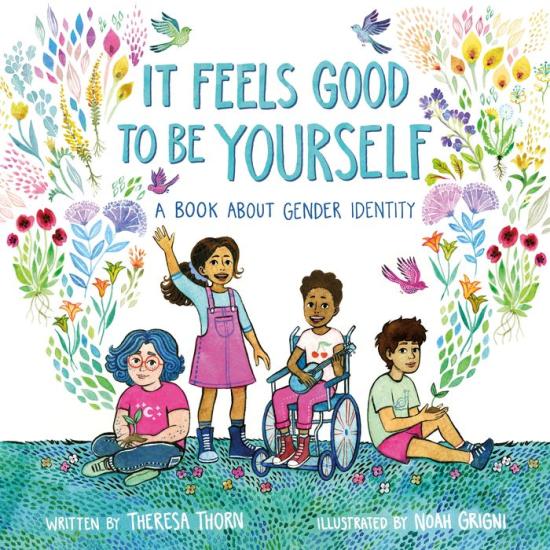
According to identity politics, there is no structure likely to be more oppressive than the family, for it is within the family that children learn how to be human, how to be boys and girls, how to grow to be men and women.
The belief that men and women are not the same, that their differences go beyond mere biology, is the consequence of miseducation. The belief that a man and a woman objectively complement each other to form a unity that engenders other human beings is the consequence of miseducation.
The more miseducated children are, the more likely they are to conform to outmoded traditional notions regarding masculine and feminine attributes.
Within Critical Theory, exhibiting behaviors, beliefs, and expectations within the broad range of the traditionally masculine and feminine can be considered problematic and suspect. If the child does not prove accepting and affirming of all those outside that traditional range, the child requires further education.
We have previously observed, in posts regarding the application of Critical Race Theory practices at Jesuit, that it is within the family that a child learns to be complicit in racism, by supporting the structures that benefit whiteness at the expense of those who are not white.
It is this miseducation of your child that the Jesuit Schools must correct if the school is to graduate men and women not only committed to doing racial justice but also to doing gender justice.
What has been socially constructed across societies at home and in the community at large can, according to Critical Theory, be deconstructed.
The first indication that deconstruction is necessary is within the child: the child’s feelings—internal feelings about self; or external, feelings about others.
The “long march through the institutions”—the effort to fragment and dismantle Western Civilization’s major institutions—has been going on for decades and now parades through the Jesuit network of secondary schools.
The prevailing culture that has accepted this view of gender has been hard at work deconstructing and reconstructing gender identities and expressions within the minds of children for quite some time: any parents who have been observing children’s television programming or movies made for children have surely observed how gender diverse, gender equitable, and gender inclusive these children’s characters have become.
Popular postmodern culture—with which Jesuit institutions harmonize themselves—has been educating your children in Good Think for some time.
Even certain political organizations claiming to be dedicated to black lives have made an immediate priority “sexual identity, gender identity, gender expression…” Black Lives Matter, during the summer of 2020 and before, was pledging itself “to dismantle cisgender privilege” so that “trans folk, especially trans women” can be uplifted away from the disproportionate impact of “trans-antagonistic violence.”
To “disrupt the Western-prescribed nuclear family structure“ and to free people “from the tight grip of heteronormative thinking” was an original BLM goal.
BLM eventually redesigned its website for its own purposes—perhaps to make its proclamations about the traditional nuclear family a bit less glaring. However, do its original goals differ markedly in intent from those of most major institutions throughout the country?
The “long march through the institutions”—the effort to fragment and dismantle Western Civilization’s major cultural institutions—has been proceeding for decades.
The long march parades currently through the Jesuit network of secondary schools.
Part 6: After the Gender Chisel, a Safe Space
Children not shaped by the classical virtues will be shaped nonetheless.
The Jesuit chisel operates according to the “virtues” of Diversity, Equity, and Inclusion.
The key to sewing doubt and undermining confidence—about yourself as a human being, about family, about society, about civilization—is not through the intellect but through untrained sentiments and emotions, through feelings unbound to logic and reason.
Gender revels in such sentiment.
The call to eradicate such barriers as misogyny and homophobia appears, at first blush, commendable: and perhaps it would be were it not a standard fashioned through the perspective of Critical Theory and the postmodern rejection of objective truth.
The Jesuit Schools Network exemplified how quickly such emotionally-driven ideas become concrete when they decided to revise Domain 5 of the 2015 document Our Way of Proceeding: Standards & Benchmarks for Jesuit Schools in the 21st century.
They did this in the wake of the nationwide protests after the death of George Floyd, some of which broke out into riots, during the summer of 2020.
Although the document was barely five years old, the Jesuits transformed Domain 5 of their Way of Proceeding as they, for the first time, hoist—as an essential Jesuit educational criterion for all schools—the trinity of Diversity, Equity, and Inclusion.
Anti-racism/anti-bias training becomes a standard under the umbrella of that trinity.
The art of genuine listening is to be modeled and taught so that “student discussions…promote equitable, deeper understandings of different backgrounds and perspectives.”
This will be listening in the postmodern sense, to be sure, where listening is not simply the means by which students hear and learn how and why a person feels a certain way but the means by which they accept and affirm those feelings. Without acceptance and affirmation, understanding cannot have reached the “deeper” level and certainly will not be considered “equitable.”
School personnel will, according to the new standard, “work to eradicate barriers between and among people such as misogyny, homophobia, and gender and socio-economic stereotyping and discrimination.”
The call to eradicate such barriers appears, at first blush, commendable: and perhaps it would be were it not an aspiration fashioned through the perspective of Critical Theory and the postmodern rejection of objective truth.
Gender and the socio-economic have already been mentioned for many a year in practically every school’s diversity statements, but the specific inclusion here of misogyny and homophobia—both of which point towards issues related to gender—are new and worth a few questions.
Is there anyone at the Jesuit Schools willing to inform students and their parents exactly what constitutes homophobia, and which school officials will determine whether a statement or action is homophobic?
If homophobia is a barrier that we must work to eradicate, it might be worthwhile indicating in advance what that barrier consists of.
Merriam-Webster defines homophobia as “irrational fear of, aversion to, or discrimination against homosexuality or gay people.” The American Heritage Dictionary of the English Language says homophobia is “fear of or contempt for lesbians and gay men.” The Collins Dictionary defines homophobia as “fear or hatred of gay people.”
Will there be Bias Reporting Systems instituted at Jesuit high schools as there are at Jesuit universities?
When any Jesuit students or teachers assert that the institution of marriage is designed solely for the union of a man and a woman, are they exhibiting an “irrational fear or hatred of gay people”?
When any Jesuit students or teachers assert that “homosexual acts are ‘intrinsically disordered’ and contrary to the natural law,” are they exhibiting homophobia?
Can a person still publicly affirm traditional Catholic teaching in a setting where anyone, including anyone who is gay, may be within earshot?
Is any institution—a church, for example—exhibiting homophobia when it “discriminates” against two men by refusing to marry them within the church?
Homophobe—like racist, bigot, and other epithets—is an ad hominem that people hurl when they have no interest whatsoever in discussing specific issues or they simply wish to end debate.
In this case, there remains a variety of issues involving the institution of marriage itself, or florists and bakers trying to run their businesses without violating their religious principles, or adoption and foster-child agencies looking for traditional family structures in the homes where children are to live: the Jesuits well know that people advocating positions on these issues not approved by the prevailing culture are accused of homophobia.
Will “anti-bias training” at Jesuit Schools impel participants to fess up to their unconscious homophobia and misogyny? Will there be declarations of heterosexual privilege and episodes of male-shaming?
Misogyny, of course, is hatred or deep-seated mistrust of women. Is there a great national urgency in eradicating barriers created by misogyny? Are Jesuit Schools hiring misogynists? Are Jesuit parents raising sons who hate and distrust women?
Are universities, where females now far outnumber men on campus, havens for misogynists? What barrier exactly must be eradicated to end the crisis in misogyny—the barrier that prevents women from being ordained deacons and priests?
Will there be Bias Reporting Systems instituted at Jesuit high schools as there are at certain Jesuit universities?
Perhaps Georgetown University, which is dedicated to a learning environment “free from harassment and discrimination” could be an exemplar for the Jesuit high schools: its “bias reporting system” encourages any member of the university to “make a report about a bias related incident.”
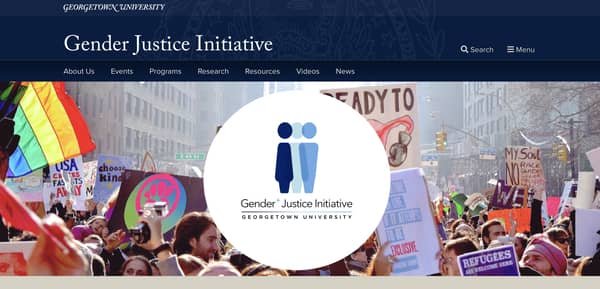
Perhaps it is these barriers—misogyny and homophobia and racism and others—that explain why almost every Jesuit college or university follows the prevailing Academy culture by offering major and minor degrees in a variety of postmodern-approved disciplines.
Jesuit’s Santa Clara University’s Department of Women and Gender Studies, with “its roots in social justice movements of the last three decades,” is a “multidisciplinary field that provides an integrated approach to understanding the social and cultural constructions of gender that shape our diverse experiences.”
Offering a major and a minor, the department’s areas of inquiry include “the construction of gender and its role as a constitutive element of social, political, economic, and legal structures; feminist theory; and the development of ideas about femininities, masculinities, and sexualities.”
Within the Women’s and Gender Studies major, students can choose one of three areas of concentration: Cultural Politics of Representation; Power, Rights, and Society; and Sexualities, Body Politics and Social Structures.
John Carroll University offers a B.A. in Gender, Sexuality, and Women’s Studies that examines “how the social construction of gender shapes personal identities, beliefs, and structured opportunities” as students “systematically analyze the intersections of gender, sexuality, race, and social class” through the lens of “interdisciplinary and feminist theories, methodologies, and paradigms.”
At Loyola University Chicago, the program in Women’s Studies and Gender Studies offers a sequence of courses at the undergraduate level “that provide our students with the tools to see themselves, their communities, and the world through the lens of gender,” with new courses added in Queer Theory, Masculinity Studies, Transgender Studies, and other fields.
Xavier University’s Gender and Diversity Studies program “acquaints students with scholarship on gender and diversity in their broadest, most inclusive sense,” the students enrolled examining the “individual and collective experiences of traditionally disenfranchised as well as privileged social groups, investigating the conceptual roots of identity as well as similarities and differences among them.” Undergraduates can shape their major with a concentration in either Women and Gender or Race and Ethnicity.
Fairfield University’s interdisciplinary program in Women, Gender & Sexuality Studies offers a minor for interested students. Scrolling through the student resources compiled by the program, a student soon discovers that creation of safe spaces for students is an important feature at Fairfield.
Demonstrating its “committment to being men and women for others,” the Gender, Sex, and Sexuality Commons is a “space in which we can create and foster an all-inclusive community for students of various genders, sexes, and sexualities.”
The Reproductive Rights Talk and Action Group at Fairfield creates “consistent dialogue on the topic of global, intersectional reproductive rights of women and females,” as it installs “action projects and events around campus to increase awareness regarding reproductive rights and justice.”
The Fairfield Safe Space program “creates a network of campus-based allies to support and confirm the dignity and self worth of gay, lesbian, bisexual, transgender, queer students and their allies.” Faculty, staff, and students are offered Safe Space training programs as well.
Safe Space programs at Jesuit universities are, apparently, not uncommon. The Office for Diversity and Inclusion at Santa Clara, for instance, explains how Safe Space Programs support the Jesuit, Catholic Mission and why it furthers the school’s commitment to “finding God in all things and in each other.”
The Association of Jesuit Colleges and Universities recently published an explanation regarding Safe Zone Training programs on the 20th anniversary of the program being established at St. Joseph’s University in Philadelphia. Training sessions have over time increased from once a year to five times a year.
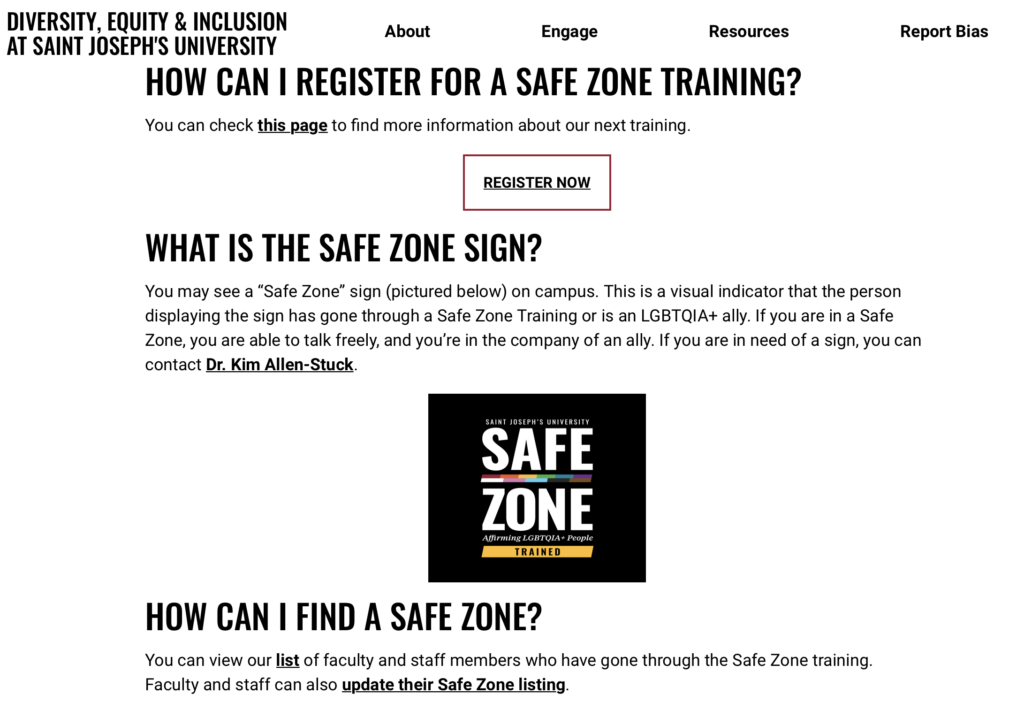
You will be glad to know that St. Joseph’s has Chosen Name and Identity Guidelines, which assists students in selecting the chosen name they wish to use on all official documents throughout the university systems. All members of the St. Joseph’s University community may use the Personal Information menu “to ensure name, gender, and pronoun fields are as you wish them to be seen by the University community.”
For those unfamiliar with the term Chosen Name, St. Joseph’s explains that a chosen name is “an alternative to an individual’s legal/primary first and middle name.”
Gender Identification, explains St. Joseph’s, is the “personal sense of one’s own gender” and “can correlate with a person’s assigned sex at birth or can differ from it.”
Being a Catholic, Jesuit university, St. Joseph’s also provides a Bias Reporting System so that bias, harassment, discrimination, and hate crimes can be reported and investigated. Whether something is actual Bias Activity is “determined through a process based on a combination of the subjective feelings of the recipient/target of that activity and the objective ‘reasonable person’ standard.” [italics mine]
What that “objective ‘reasonable person’ standard” is remains unexplained, but that subjective feelings initiate concrete action is undeniable and, in the postmodern era, expected.
We note the result: Catholic institutions of higher education organized by the Society of Jesus construct safe spaces and bias reporting systems for young adults apparently incapable of living on a Jesuit campus without a safe space to relieve the anxiety-producing experience of living amongst people who might not affirm their lives 24-7.
Perhaps safe spaces have already arrived at some of the order’s high schools.
Isn’t the proliferation of clubs organized by racial characteristics, ethnicity, and sexual orientation the college preparatory-level of university safety zones? Isn’t the quest for allies among members of the student body an indication that those not officially allies are considered the enemy?
For $25,000 per annum per student, surely a safe space from the enemy can be provided.
And what about bias reporting systems for the high schools? Those too would be effective college preparation.
The Gender Chisel’s appearance at Jesuit secondary schools is the fruit of the Critical Theories prevalent in the Society of Jesus wing of The Academy. Training in diversity, equity, and inclusion keeps the chisel suitably sharp.
C. S.Lewis nods. Sans prudence, sans temperance, sans justice, sans fortitude.
Men without chests, indeed.
…